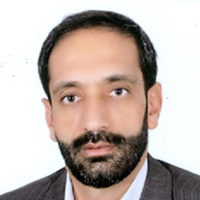Analyzing spatial inequality in the city of Kerman using spatial statistics
Cities, as complex social, geographical, and economic phenomena, also represent a significant spatial phenomenon. In fact, a city is a spatial unit where politics and power are closely intertwined, and cities require policies for their development. The urban living environment necessitates extensive policymaking and development interventions.
This research is of an applied development nature, utilizing a descriptive-analytical approach. Data for this study were collected from two sources: library resources and land use maps of Kerman city. These data were analyzed by transferring them to the ArcGIS software environment. To investigate and comprehend the level of dispersion, clustering, and expansion of Kerman city, as well as to understand its physical development pattern, various spatial statistical analysis methods were employed.
The findings indicate that the spatial distribution pattern of Kerman city is clustered, with a relatively low level of spatial clustering intensity. The city of Kerman highlights concentration in specific areas within the city, and it is not uniformly distributed across the city.
The findings suggest that the development of Kerman city has been predominantly horizontal, with a continuous and dense development pattern in the city center. Results indicate that as we move from the city center towards the periphery, the spatial distribution pattern becomes more scattered. Development has also taken place beyond the old city walls and between the two northern and southern belts. Furthermore, some villages are practically considered urban areas due to their proximity to the city and are within the legal city limits, such as Taherabad in the west and Sarasiyab in the east of the city. These settlements exhibit a semi-urban and semi-rural character both in terms of spatial structure and the employment status of their residents.
-
Co-citation analysis of the concepts of hazard, human and environment from 1985 to 2020
Hossein Ghazanfarpor, Mohsen Pourkhosravani *, Taibeh Mahmoodi Mohammadabadi
Journal of Environmental Hazard Management, -
analysis the role of the urban spaces in creating a feeling of vitality and happiness of citizens (Case study: Ganjali Khan Square, Kerman)
Hossein Ghazanfarpor *, Mojtaba Soleimani Damaneh, Marzieh Sedaghat kish, Fareshteh Safarzadeh
Quarterly Journal of Human Geography,



